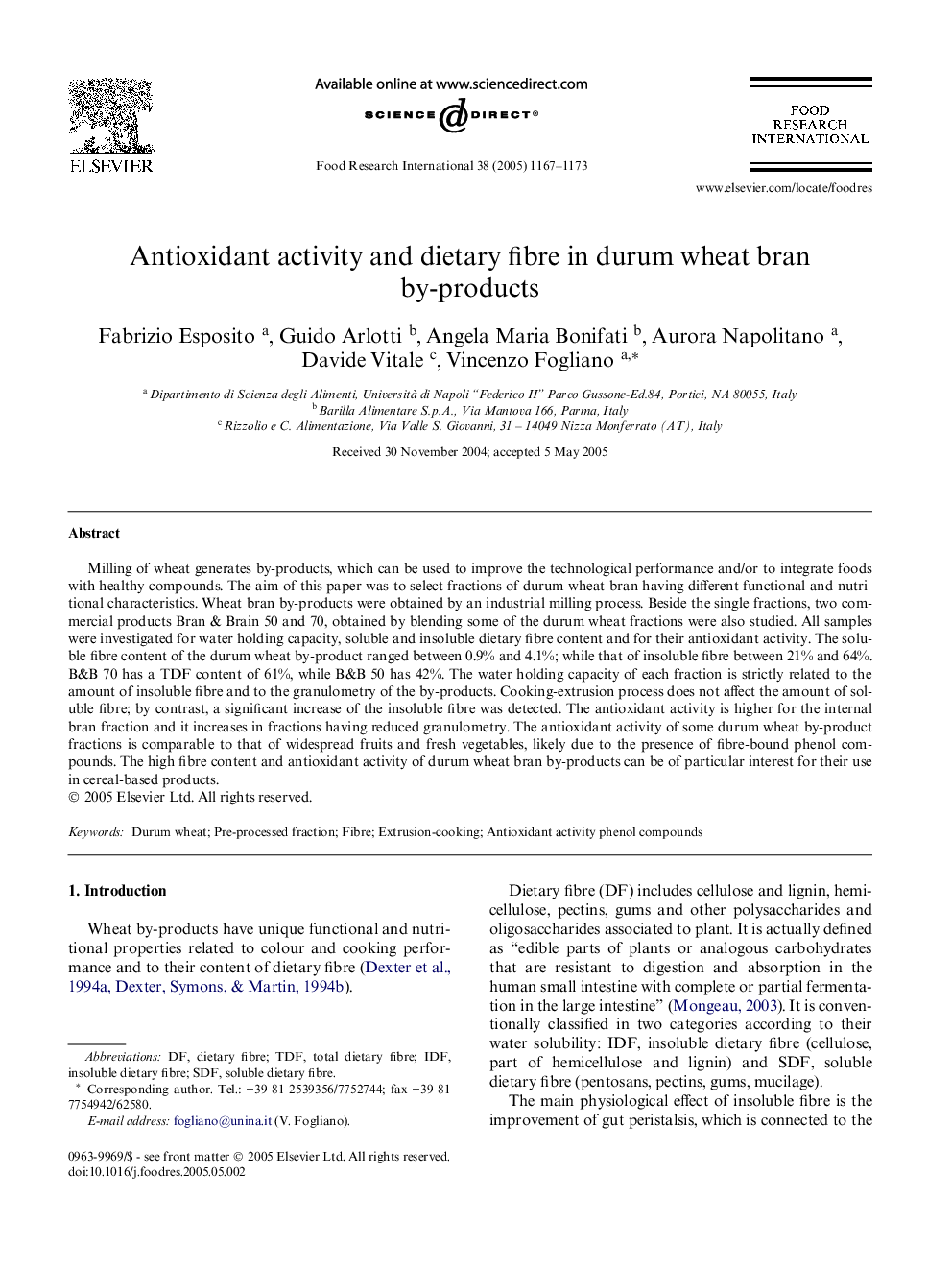| Article ID | Journal | Published Year | Pages | File Type |
|---|---|---|---|---|
| 9487485 | Food Research International | 2005 | 7 Pages |
Abstract
Milling of wheat generates by-products, which can be used to improve the technological performance and/or to integrate foods with healthy compounds. The aim of this paper was to select fractions of durum wheat bran having different functional and nutritional characteristics. Wheat bran by-products were obtained by an industrial milling process. Beside the single fractions, two commercial products Bran & Brain 50 and 70, obtained by blending some of the durum wheat fractions were also studied. All samples were investigated for water holding capacity, soluble and insoluble dietary fibre content and for their antioxidant activity. The soluble fibre content of the durum wheat by-product ranged between 0.9% and 4.1%; while that of insoluble fibre between 21% and 64%. B&B 70 has a TDF content of 61%, while B&B 50 has 42%. The water holding capacity of each fraction is strictly related to the amount of insoluble fibre and to the granulometry of the by-products. Cooking-extrusion process does not affect the amount of soluble fibre; by contrast, a significant increase of the insoluble fibre was detected. The antioxidant activity is higher for the internal bran fraction and it increases in fractions having reduced granulometry. The antioxidant activity of some durum wheat by-product fractions is comparable to that of widespread fruits and fresh vegetables, likely due to the presence of fibre-bound phenol compounds. The high fibre content and antioxidant activity of durum wheat bran by-products can be of particular interest for their use in cereal-based products.
Keywords
Related Topics
Life Sciences
Agricultural and Biological Sciences
Food Science
Authors
Fabrizio Esposito, Guido Arlotti, Angela Maria Bonifati, Aurora Napolitano, Davide Vitale, Vincenzo Fogliano,
